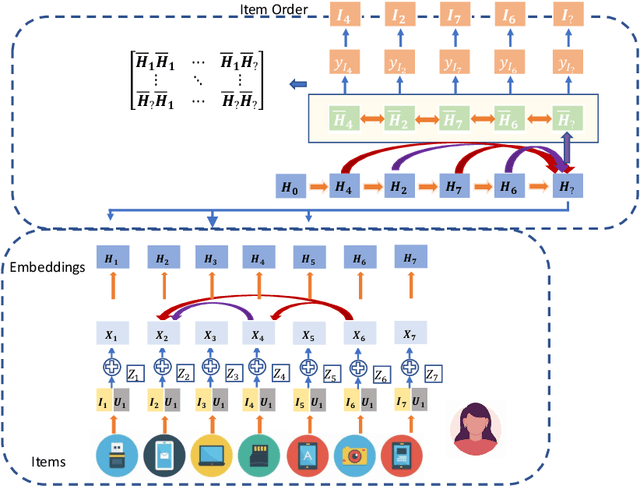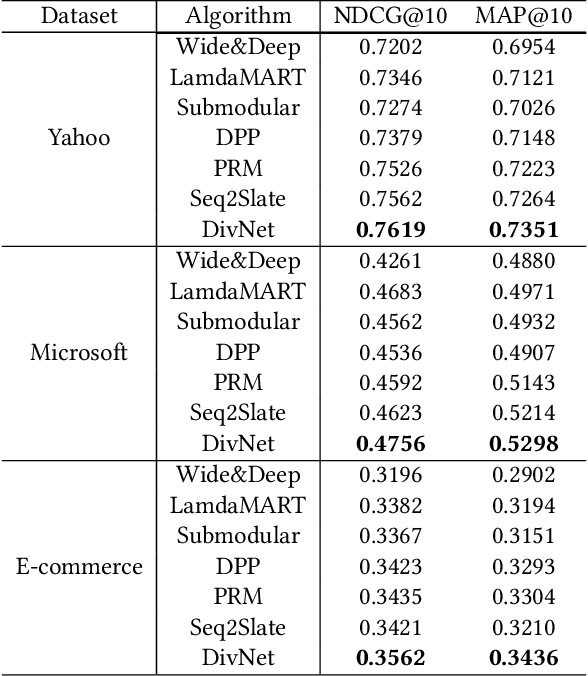DivNet: Diversity-Aware Self-Correcting Sequential Recommendation Networks
Paper and Code
Nov 01, 2024



As the last stage of a typical \textit{recommendation system}, \textit{collective recommendation} aims to give the final touches to the recommended items and their layout so as to optimize overall objectives such as diversity and whole-page relevance. In practice, however, the interaction dynamics among the recommended items, their visual appearances and meta-data such as specifications are often too complex to be captured by experts' heuristics or simple models. To address this issue, we propose a \textit{\underline{div}ersity-aware self-correcting sequential recommendation \underline{net}works} (\textit{DivNet}) that is able to estimate utility by capturing the complex interactions among sequential items and diversify recommendations simultaneously. Experiments on both offline and online settings demonstrate that \textit{DivNet} can achieve better results compared to baselines with or without collective recommendations.
 Add to Chrome
Add to Chrome Add to Firefox
Add to Firefox Add to Edge
Add to Edge